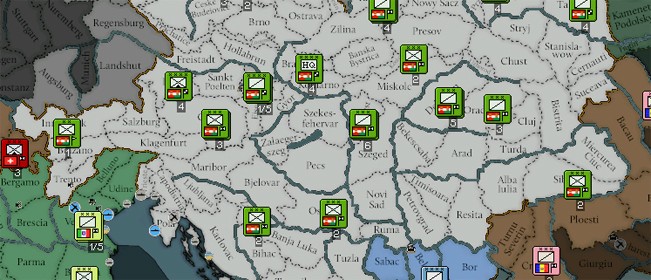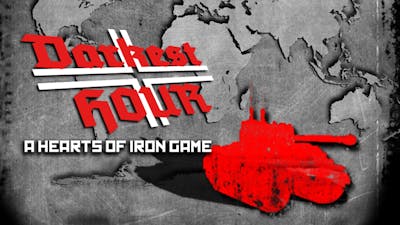Italy: Goals, Considerations. Having played as various nations in Darkest Hour at one point or another, I feel like every country has a reasonably obvious list of goals to accomplish, which facilitates the rest of the gameplay. As Japan you need a decent navy to smash the USA/UK fleets, a large ground force for grinding down the Chinese, and so on. Darkest Hour is a Click & Point Puzzle game, where you find yourself in a meeting of alumni of your class, in the gym of your old school. However, after an unexpected blackout, you are stuck at school and will try to face the adversities you encounter and the haunt that surrounds the school. Escape the Darkest Hour: Torture Chamber. There is a psychopath on the loose and you’ve been kidnapped! The killer likes to toy with victims and has left to make preparations Escape within the hour or become the next victims!.Warning: Special effects include strobe/flashing lights and fog. Darkest Hour is a mod that will add a new map with around 2800 provinces and a revamped UI! It may also feature a better diplomatic system with features that had been left out in the base game.
Darkest Hour: Europe ’44 – ’45
Publisher: Valve/Steam. Designer: Darkest Hour Team. A free add-on for Red Orchestra by Tripwire Interactive (available via Steam or retail for $19.99)
Passed Inspection: A realistic depiction of the mechanics of combat. Detailed weapons, right down to the Garand’s distinctive 'ping.' A very few incredibly atmospheric maps.
Failed Basic: Never quite captures the grandeur of Red Orchestra’s you-are-there conflicts. Many battles are one-sided affairs or otherwise poorly designed.
Darkest Hour Game Map
While Red Orchestra covers action on the Eastern Front between German and Soviet forces, Darkest Hour returns to what is likely more familiar territory for gamers, the Western Front.
Red Orchestra. Anyone looking for a multiplayer first person shooter that captures the brutality and uncertainty of war will find no better title than this. Running across the sights of a machine gun hundreds of meters away and being cut down without firing a shot, being run over by a friendly tank as you hide praying in the grass – ignominious death is a commodity that’s on a fire sale. Balancing this is an intense attention to realism that crafts excitement and immersion from the pervasive confusion of combat: Bolt-action rifles are accurate but slow, so each shot has to count; house-to-house battles are terrible affairs that often end at bayonet point, and the survivor is likely the player who took care to stay silent; careful movement is the key to not getting yourself shot, and getting shot means being dead. The action takes place online, pitting all comers against skilled players from around the world, and the game has created a multiplayer community that rivals those of its big-budget competitors such as Call of Duty.
{default}Enter, then, the first official release of an add-on for Red Orchestra’s engine: Darkest Hour. While Red Orchestra covers action on the Eastern Front between German and Soviet forces, Darkest Hour returns to what is likely more familiar territory for gamers, the Western Front. American dogfaces and British tommies land at Normandy and open up the road to the Rhine through a series of brutal small engagements that strike a much different note from the larger but little-known affairs portrayed by Red Orchestra. Unfortunately, this works against the game, which we’ll discuss in a moment.
In Darkest Hour players take control of a single soldier fighting in a variety of standalone encounters across Northern Europe. At the start of each battle players select the role they’d like to play, as defined by a fairly well-designed set of classes. These classes range from simple (rifleman) to fiendishly complex and hard-hitting (commander or tank crewman). Often, the more powerful classes have hard limits on the number of players that can choose them – for instance, there is usually only one commander per side. There are challenges inherent in each role, however, and players looking for a good time can have just as much fun playing as a rifleman as they can at driving a tank.
Available battles run the gamut from early engagements by Allied paratroopers to desperate scuffles in the confusion of the Ardennes. Curiously absent, though, are the massive set-piece struggles and attention to detail that made Red Orchestra so occasionally breathtaking.
The feeling of taking part in a larger conflagration is a key to many Red Orchestra battles, and here the action is noticeably smaller-scale, taking place in tiny villages or isolated sections of forest. While this should in theory make for more intensity, one quickly discovers that the missing atmosphere is tantamount to unrealism: it hardly matters whether your weapon has the same manufacturer’s stamp as its historical counterpart when you don’t actually feel that you’re fighting in a battle that has larger meaning.
This is made worse by the inadequacy of some of the maps, mostly in terms of compromises apparently made in favor of realism or balance that undermine the immersion of the game. One, for example, takes place in a trench line under assault by German armor and infantry in the middle of a snowstorm. Painfully jarring, though, is the fact that defending troops have failed to create a defensible position – you have practically no line of sight to the attacking Germans, which effectively kills any excitement the map may have had and introduces frustration in its place. Another map involves an American assault on a German-held village, and the only approaches available are across a hundred meters of open ground, under the very gunsights of the defending troops. While this may be realistic, it is anything but fun. In short, while the game may strike a balance of realism and immersion in its mechanics, it is let down on the same token by its maps.

This is not to say that all battles are gamey let-downs: in fact, there are a precious few that not only aspire to the level of authenticity in Red Orchestra but surpass it. One in particular involves an assault by American paratroopers on a bridge. It’s a familiar scenario, but the fight takes place almost entirely at close-quarters: seizing one of a few available approaches, clearing out the claustrophobic underside of the bridge, infested with stranded riflemen, clinging desperately to the few meters of ground gained on the opposite side as counterattacks tear your comrades to pieces – it’s an experience that is invasive and affecting. I found myself stopping play because the fight was just too intense. Unfortunately, these moments are far rarer than they could be.
Much more positively, combat in Darkest Hour looks, sounds, and feels real. This was a major feature of its predecessor and the same experience is provided here. Weapons feel right, fatigue is well-modeled, and you must work at your skills to master the intricacies of fighting on an unforgiving battlefield; although this is cold comfort when changing an overheated machine gun barrel in the middle of a firefight, it is an awesome testament to the developers, and makes for a moment-to-moment experience that is more involving than any other Western Front shooter on the market. Despite (and flying in the face of) atmospheric issues, this gritty low-level realism is where Darkest Hour truly shines.
Darkest Hour is a game that fails to live up to its legacy, but at the same time creates one of the most realistic depictions of the Western Front available in a market deluged with similar titles. Fans of World War II games and challenging first-person shooters would be well served by giving it a look.
Darkest Hour Game Cheats
Armchair General score: 78%
ACG Intel:

Phillip Culliton has been a wargamer since the ripe old age of nine when he spent a week’s lunch money on a tattered board game set in Vietnam, causing his peace-loving parents much consternation. It was no surprise to them when he began writing computer wargames in their basement as a wee lad; he went on to become a 'real' programmer and spent eight years building intelligent systems for the legal industry until happy chance ejected him to bob adrift in the new economy. He currently works as a developer and writer in the game industry. He continues to cause consternation, now for his lovely wife, by introducing his children to the same great hobby that struck his fancy twenty years ago.
Published by Paradox Interactive and developed by a team of independent developers, Darkest Hour is a grand strategy game featuring a mixture of short and in-depth campaigns set across the darkest chapters of the 20th century, from the outbreak of the Great War up to the onset of the Cold War.Darkest Hour introduces an artificial intelligence that is able to react to hundreds of different situations simultaneously, along with a dynamic diplomatic system that will allow the player to have a real impact on the course of history.

Darkest Hour Game Free
Features
- Short and grand campaigns allow players to experience the darkest hours of the 20th century, from the Great War to the onset of the Cold War
- World map drawn by hand to offer strategic and tactical opportunities
- Dynamic diplomatic system giving the player greater influence on the course of events
- Artificial intelligence capable of reacting to hundreds of different situations
Grand Campaigns
- 1914 The Great War (starting on June 27, 1914)
- 1933 Day of Decision (starting on March 4, 1933)
- 1936 The Road to Another War (starting on January 1, 1936)
- 1939 Invasion of Poland (starting on September 1, 1939)
- 1940 Burning Europe (starting on May 10, 1940)
- 1941 Awakening the Giant (starting on June 22, 1941)
- 1942 Enemy at the Gate (starting on November 22, 1942)
- 1943 Allied Invasion of Sicily (starting on July 26, 1943)
- 1944 Allied Landing in Normandy (starting on June 20, 1944)
- 1945 Battle of the Bulge (starting on December 16, 1944)
Battle Scenarios
- 1904 Russo-Japanese War
- 1939 Invasion of Poland
Release Date: April 5th, 2011
Publisher: Paradox Interactive
Darkest Hour Game Download
System Requirements: Windows 98/ME/2000/XP/Vista/7, Pentium III 800MHz, 128MB RAM, 2GB hard drive space, DirectX-compatible video card, DirectX 9.0 or higher.